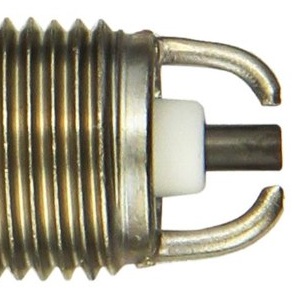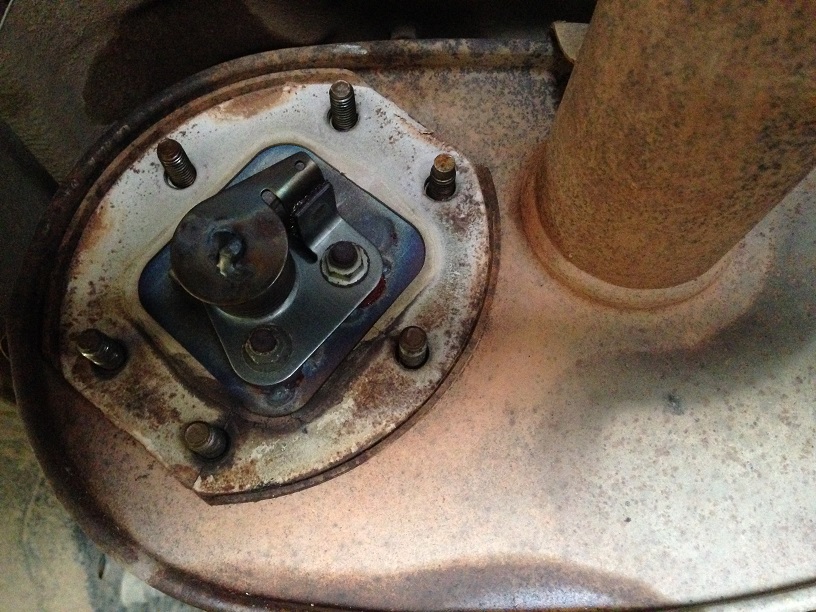Prado 1999 V6 3.4L manual engine power loss.
Experienced hesitation/misfires when accelerating, erratic engine idle and poor running issues over the 2014 christmas holidays in NSW's when running on E10 fuel.
Bridging terminals TC and E1 on the engine compartment diagnosis connector brings up fault codes on check engine lamp (counting the number of flashes);
22 Coolant temperature sensor (tests within range, cold 20°C 2.35k (2k - 3k) ohms and hot 80°C 283 (200 - 400) ohms).
24 Inlet air temperature sensor (part of MAF, tests within range, 25°C 1.97k ohms, at 20°C 2.2k - 2.7k ohms, at 60°C 0.5 - 0.7k ohms).
31 Air Flow sensor (MAF - mass air flow, tests within range 1.1 - 1.5 volts at idle, engine not running 0.74v).
41 Throttle position sensor (tests within range, throttle fully closed 0.53v, range 0.3 - 1.0 volts and throttle fully opened 3.2v, range 2.7 - 5.2 volts).
Can not use OBDII auto scanner or OTC info logger OBDII, only 120/150 series petrol Aug 2004 (Jul 2005?) onwards and diesel Nov 2006 onwards models (both with 5 sp auto or 6 sp manual), not the 90/120 series with the 4 sp auto or 5 sp manual gearboxes.
Toyota initially used the OBDII ISO 9141 protocol (1997 - 2007) then switched to the CAN ISO 15765 protocol (2004 - 2008 onwards).
All the above four sensors share the same earth to ECU, E2 and from ECU, E1.
Wiring between sensors and ECU and earths at igniter plug and side of lower plenum chamber (near diagnosis connector) tests OK.
5v supply (VC), tests OK (4.99v), range 4.5 - 5.5v.
Removed EFI fuse and pulled all connectors from ECU and checked for bent pins and reinserted connectors (makes for better contact between pins and connector).
MAF is checked every 10,000km's, if dirty it is cleaned with CRC Mass Air Flow Sensor Cleaner.
Cylinder compression tests OK (cold engine 1250 - 1400 kPa), engine spec at normal operating temperature, nominal 1200 kPa amd minimum 1000 kPa, with allowable variation of 100 kPa.
Fuel pressure was not tested (spec at idle 265 kPa), just need to find pressure/vacuum gauge in garage.
Ignition coil primary and secondary resistance tests OK (0.7 ohms and 12.81k, 12.82k and 12.86k ohms), range 0.67 - 1.05 ohms and 9.3k - 16k ohms.
Injector resistance tests OK (14 ohms), range 13.4 - 14.2 ohms.
Looking at spark plug colour, it appears its running on the lean or hot side on all 6 cylinders, plugs regapped from 0.8mm to 1.1mm. May try NGK BKR5EKB-11 spark plugs next time.
Spark plug leads tested OK (15.39k, 16.56k and 18.07k ohms), maximum allowed 25k ohms. Replace leads at 100,000 - 160,000km's. May replace with NGK leads.
Faulty or inferior ignition leads can cause problems with EFI systems due to electromagnetic interference (EMI) and radio frequency interference (RFI) being radiated into wiring harnesses nearby and radio interference on AM.
Can also cause weak or non existent spark resulting in misfiring/hesitation, rough, erratic engine idle, engine surging, decreased fuel mileage, engine power loss and poor/sluggish performance.
A spring loaded power valve is located on front of muffler, this alters the exhaust gas flow under high speed conditions, increasing power output and reduces fuel consumption.
Have not tried removing power valve or exhaust pipe to see if its causing any restrictions in resonator (no catalytic converter), muffler or silencer.
Need to check new timing belt (replaced at 132,083km's by Toyota) maybe a few teeth out (check 3 timing marks on both camshaft sprockets and crankshaft sprocket are correctly aligned).
Fuel consumption is around 12.8L/100km, highway driving with some city, 13.5L/100km, city driving with some highway and 16.6L/100km, city driving.
Vehicle has done 153,293km's with no problems other than replacing springs and shock absorbers at 133,015km's.
Do routine maintenance and servicing once out of warranty every 6 months/10,000km and Toyota does every 40,000km service. May try UltraTune next time at 160,000km service.
Use Castrol Magnatec 10W-40 semi-synthetic motor oil, uses very little oil over a 6 month/10,000km period (oil never required topping up). Switched from using semi-synthetic Shell Helix HX7 15W-50.
No oxygen sensor is fitted in exhaust manifold, so vehicle operates in open loop mode with no feed back on air/fuel ratio (maintain stoichiometric ratio around approximately 14.7:1).
Optimum engine efficiency is maintained by two knock sensors that detect detonation (pre-ignition - pinging sound) in cylinders and retards the ignition timing to prevent engine damage.
Retarding the ignition timing also reduces power output and fuel efficiency.
CO adjuster is just air/fuel ratio control at idle. Check/adjust every 12 months/20,000km, requires a exhaust emissions gas analyser.
So using 95 or 98 octane petrol (higher compressibility before detonating) causes the ECU to retard the ignition timing less, hence more power and better fuel efficiency, both have similar energy densities per litre as 91 octane petrol.
With 10% ethanol (E10), it has less energy density (1.36 MJ/L less) so earlier EFI systems may not be able to compensate (run leaner), resulting in hesitation/misfires during acceleration.
Ethanol (ethyl alcohol) is hygroscopic (readily absorbs water from the atmosphere causing phase separation of fuel), and is a versatile solvent (deterioration to metal, rubber and plastic parts of fuel system).
Using BP E10 petrol rather than Shell E10 petrol (possible bad batch of fuel - water/ethanol/rust/gummy varnish) seemed to fix hesitation/misfires during acceleration but engine power loss still remained.
Filled tank with BP normal 91 octane petrol (no ethanol), pulled EFI fuse to reset ECU and clear fault codes, all good now, ECU may have been in limp home mode or fail safe mode and limits engine power.
Fault codes have not reappeared after 2970km (4 Oct 2015) so may have been a intermittent sensor, earth problem, bad connection on connector, incorrect spark plug electrode gap or using E10 petrol.
New Denso K16TR11 spark plug, spark plug after 30,914km's and muffler power valve (external view with cover removed)





